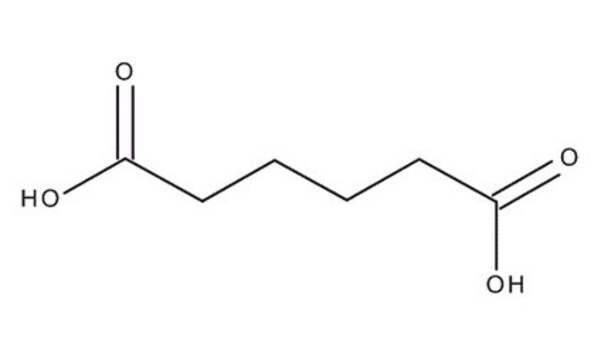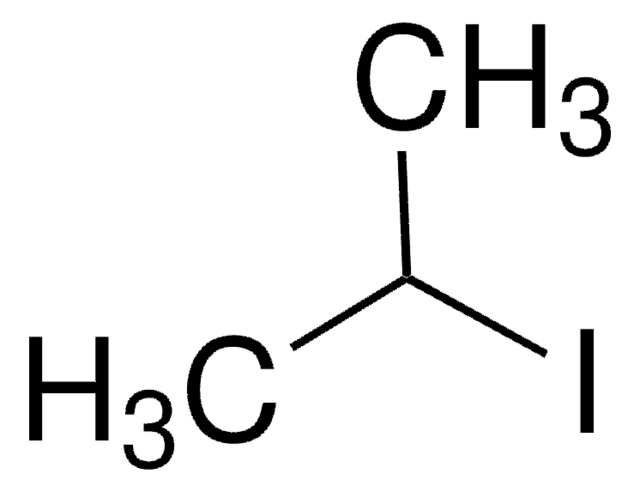Wichtige Dokumente
09582
Adipinsäure
BioXtra, ≥99.5% (HPLC)
Synonym(e):
Hexandisäure
About This Item
Empfohlene Produkte
Dampfdichte
5 (vs air)
Qualitätsniveau
Dampfdruck
1 mmHg ( 159.5 °C)
Produktlinie
BioXtra
Assay
≥99.5% (HPLC)
Selbstzündungstemp.
788 °F
Glührückstand
≤0.05% (as SO4)
Verlust
≤1% loss on drying, 110 °C
bp
265 °C/100 mmHg (lit.)
mp (Schmelzpunkt)
151-154 °C (lit.)
151-154 °C
Löslichkeit
H2O: soluble 23 g/L at 25 °C
Anionenspuren
chloride (Cl-): ≤50 mg/kg
nitrate (NO3-): ≤30 mg/kg
sulfate (SO42-): ≤500 mg/kg
Kationenspuren
As: ≤3 mg/kg
Cu: ≤10 mg/kg
Fe: ≤5 mg/kg
Pb: ≤10 mg/kg
Zn: ≤10 mg/kg
SMILES String
OC(=O)CCCCC(O)=O
InChI
1S/C6H10O4/c7-5(8)3-1-2-4-6(9)10/h1-4H2,(H,7,8)(H,9,10)
InChIKey
WNLRTRBMVRJNCN-UHFFFAOYSA-N
Suchen Sie nach ähnlichen Produkten? Aufrufen Leitfaden zum Produktvergleich
Signalwort
Danger
H-Sätze
P-Sätze
Gefahreneinstufungen
Eye Dam. 1
Lagerklassenschlüssel
11 - Combustible Solids
WGK
WGK 1
Flammpunkt (°F)
384.8 °F - closed cup
Flammpunkt (°C)
196 °C - closed cup
Persönliche Schutzausrüstung
dust mask type N95 (US), Eyeshields, Gloves
Hier finden Sie alle aktuellen Versionen:
Besitzen Sie dieses Produkt bereits?
In der Dokumentenbibliothek finden Sie die Dokumentation zu den Produkten, die Sie kürzlich erworben haben.
Kunden haben sich ebenfalls angesehen
Unser Team von Wissenschaftlern verfügt über Erfahrung in allen Forschungsbereichen einschließlich Life Science, Materialwissenschaften, chemischer Synthese, Chromatographie, Analytik und vielen mehr..
Setzen Sie sich mit dem technischen Dienst in Verbindung.








